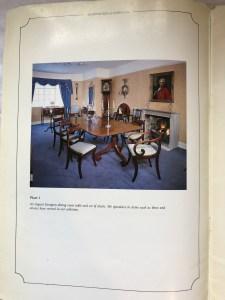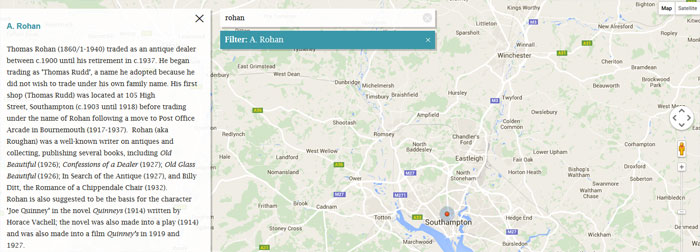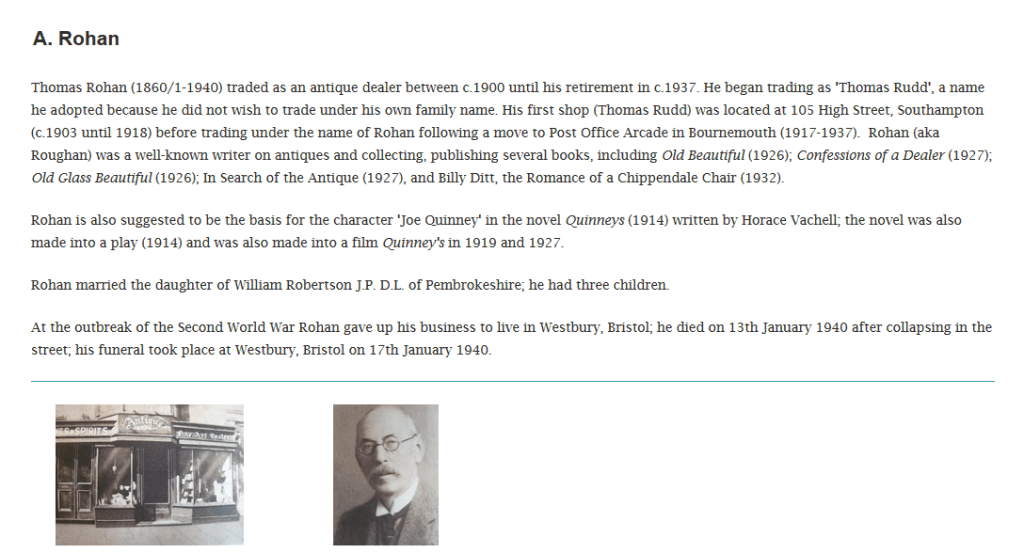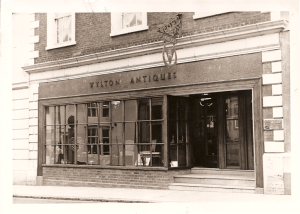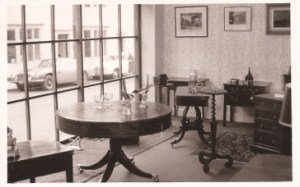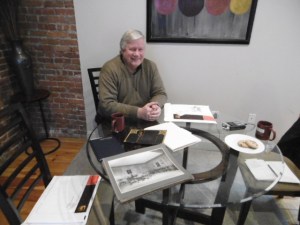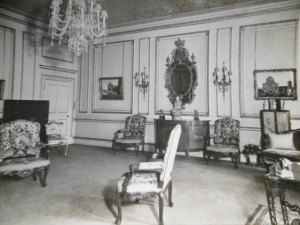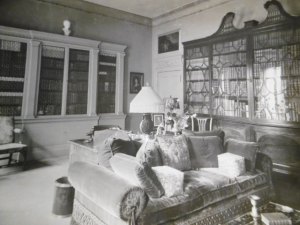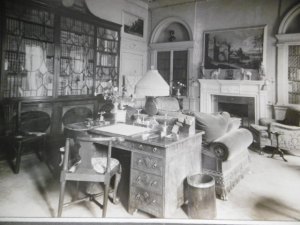The collection of antique dealer archives at the Brotherton Library Special Collections (BLSC) at the University of Leeds has a new donation – two fascinating photograph albums, dating from c.1920-1930, illustrating the stock of the well-known and highly important antique dealer furniture dealers’ Kent Gallery Ltd. The albums have been generously donated to the BLSC by the V&A Museum – thanks to Kate Hay, Assistant Curator, Furniture, Textiles and Fashion at the V&A and her colleagues Leela Meinertas (Senior Curator of Furniture at the V&A) and Christopher Marsden (Archivist at the Archive of Art & Design) – and thank you to Karen Sayers, archivist at the Brotherton Library Special Collections, for accepting the donation!

Kate and I came across the photo albums back in 2017 when I was with Kate at Blythe House (the V&A Museum stores) whilst we were looking over some other antique dealer related material, and I immediately had a sense that the albums were created by the antique dealers’ Kent Gallery. I’d seen Kent Gallery photographs many times previously and, like many leading antique dealer photographs, they have a very distinctive appearance – often the objects are photographed against particular backgrounds or are framed in a particular way. Here’s some examples of the photographs in the Kent Gallery albums – the albums are quite large format (c.20 inches high); they are (despite looking a bit shabby at present) quite grand leather finished and gilt-tooled albums. The photograph albums were used by Kent Gallery as inventories of stock, as well as perhaps to show customers what was available for sale, and acting as catalysts for asking customers what kinds of antique furniture they might be interested in purchasing.
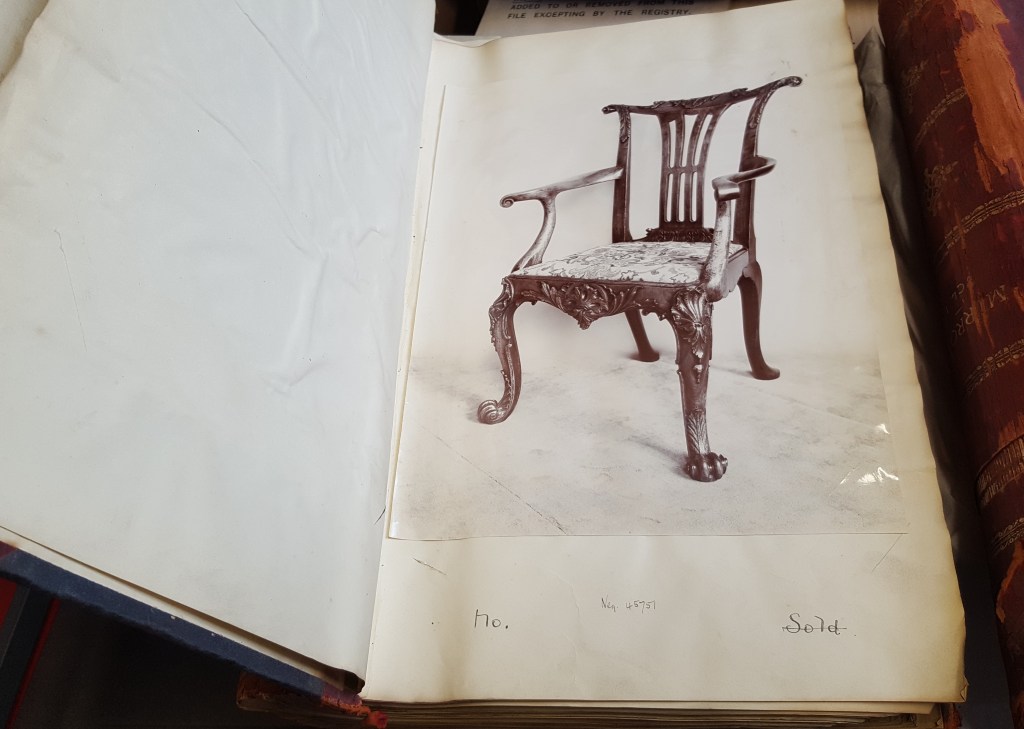
The 18th century chair in the photograph (above), from one of the albums, has an annotation indicating that it had been ‘Sold’ and includes a negative number for the photograph. The photograph below, shows an 18th century giltwood mirror (also indicated as ‘Sold’), and the negative number, but in this page the object is also inscribed with a stock number.
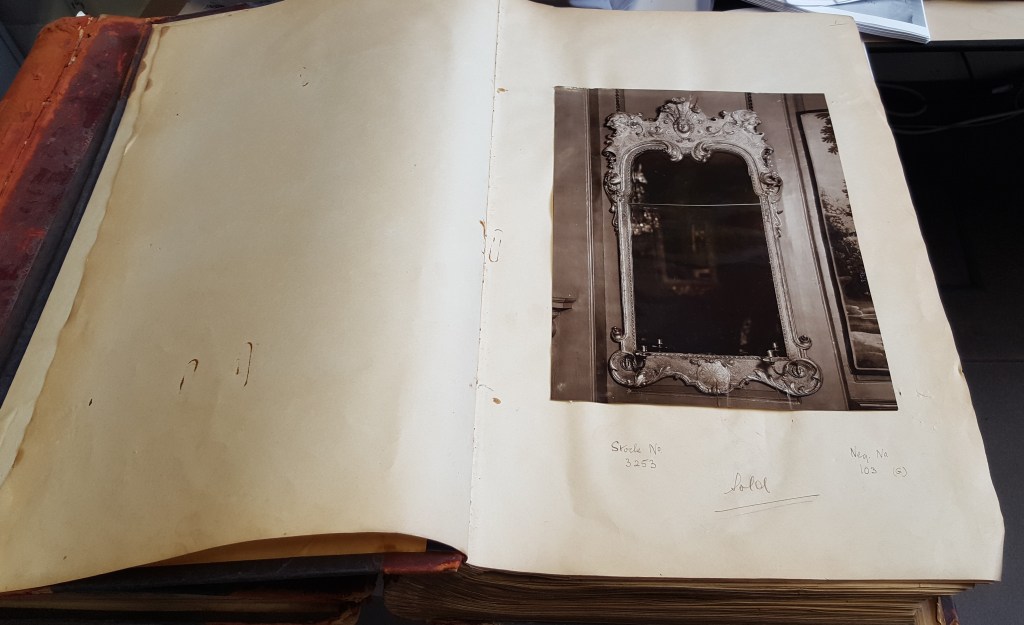
Photograph albums such as these seem to have been relatively common among leading dealers from the early 1900s until the 1960s. I’ve seen examples created by several well-known dealers, such as Mallet & Son, M. Harris & Sons and W.F Greenwood & Sons – indeed, I posted a blog entry on the W.F. Greenwood & Sons photograph album on this blog in July 2014 – see earlier blog post here.
Kate Hay did some further research on the albums and discovered that they had been given to the V&A Museum by the antique dealer Ronald A. Lee in 1973, but had never been accessioned into the V&A collection – it’s fitting therefore that the albums are coming to the BLSC, which, as you may know, also has a collection of R. A. Lee material donated by Ronald Lee’s daughter Georgina Gough.
Kent Gallery were one of the leading dealers in antique furniture in the opening decades of the 20th century, trading from various locations in London – the main headquarters of the business was in Conduit Street. The business was established by Edward Horace Benjamin, who, by the early 1920s had been joined by Lionel Harris Junior (b.1903) and Maurice Harris (b.1900), the sons of the well-known dealer Lionel Harris (1852-1943). The Harris family had extensive antique dealing interests – they owned ‘The Spanish Gallery’, (aka ‘The Spanish Art Gallery’) one of the leading dealers in Spanish work of art in the period; and Lionel Jnr and Tomas Harris (1908-1964) also operated their own antique dealing businesses in the 1920s and 1930s.
Kent Gallery was one of the Harris families’ specialist antique dealing businesses – with a speciality, from the 1920s, for selling antique English furniture. The business was one a number of antique dealers in the period that seem to have focused on selling English furniture, no doubt spurred on by the publication of key texts such as Percy Macquiod’s A History of English Furniture (1904-1908) and Macquoid and Edwards’ Dictionary of English Furniture (1924-1927). Indeed, many of the photographs in these volumes were supplied by dealers such as Kent Gallery, Moss Harris & Sons and Frank Partridge & Sons.
Some other Kent Gallery material which I’ve collected over the years or which has been kindly sent to the antique dealer research project also demonstrates the tightly imbricated relationships between the development of scholarship on English furniture and the market for antiques in the period. For example, our friend Chris Jussel, formerly of the leading dealers Vernay & Jussel, sent us an invoice back in 2019 which records the sale of a ‘Sheraton mahogany two-door bookcase’ sold by Kent Gallery to Arthur S. Vernay Inc (a precursor to Vernay & Jussel), in September 1931 for £1,120.
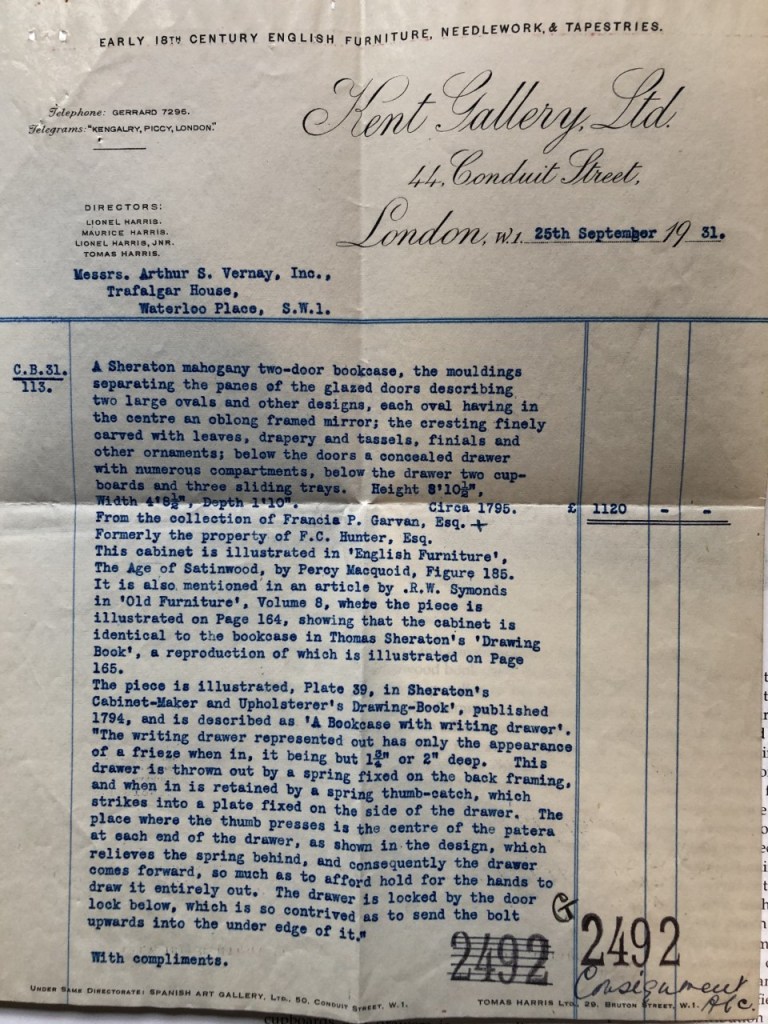
The bookcase, as the Kent Gallery invoice highlights, was formerly in the collections of the well-known American collector of antiques Francis P. Garvan (1875-1937), as well as that of the collector F.C. Hunter; but had also been previously illustrated in Percy MacQuoid’s A History of English Furniture (1904-1908) in the volume titled, The Age of Satinwood, ‘figure 185’. Illustrated below is the very bookcase.

In the antique dealer project archives we also have a very small cache of loose photographs from Kent Gallery – I picked these up about 10 years ago, from Ebay, in a small collection of photographs of antique furniture which includes photos from the dealers Basil Dighton, G. Jetley, Robersons and Gill & Reigate. The Kent Gallery photographs have a distinctive style, as I mentioned. This ‘George I’ chair, for example, (see below) from the cache of photographs, is similarly framed and has the same background to the Kent Gallery album photograph of the mahogany chair (see above).

The verso of the photograph of the ‘George I’ chair has a Kent Gallery stamp. Thanks to Chris Coles, who kindly send us a photograph of the advertisement in The Connoisseur in 1927 from Kent Gallery, which illustrates the chair and which helps us date the Kent Gallery albums to c.1920-1930.
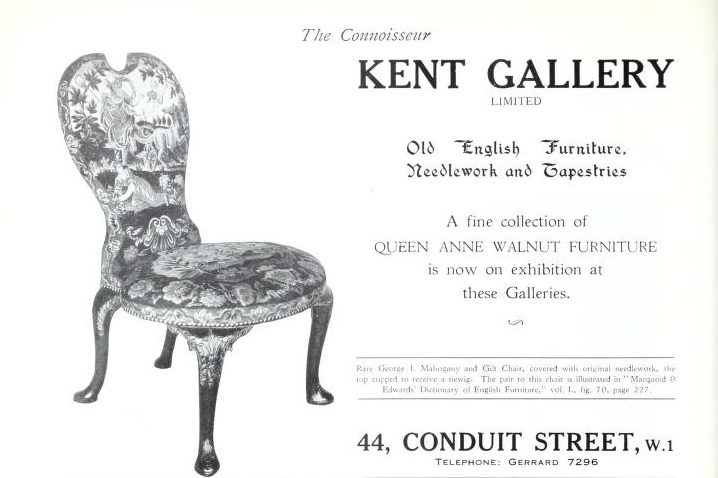
Thanks also to Chris Jussel and Chris Coles, who both pointed out to me that this chair is one of a set – there are two from the set in the Metropolitan Museum, New York, and another pair are also in the collections at the Lady Lever Art Gallery in Port Sunlight, near Liverpool. One of chairs was also illustrated in Macquoid and Edwards Dictionary of English Furniture (vol I. 1924), p.227, (which is also mentioned in the Kent Gallery advert) where it had a provenance to the collection of Sir George Donaldson (1845-1925). The Kent Gallery chair is evidently from the same set, with some minor differences (the Kent Gallery chair has brass studs to the seat covering for example).
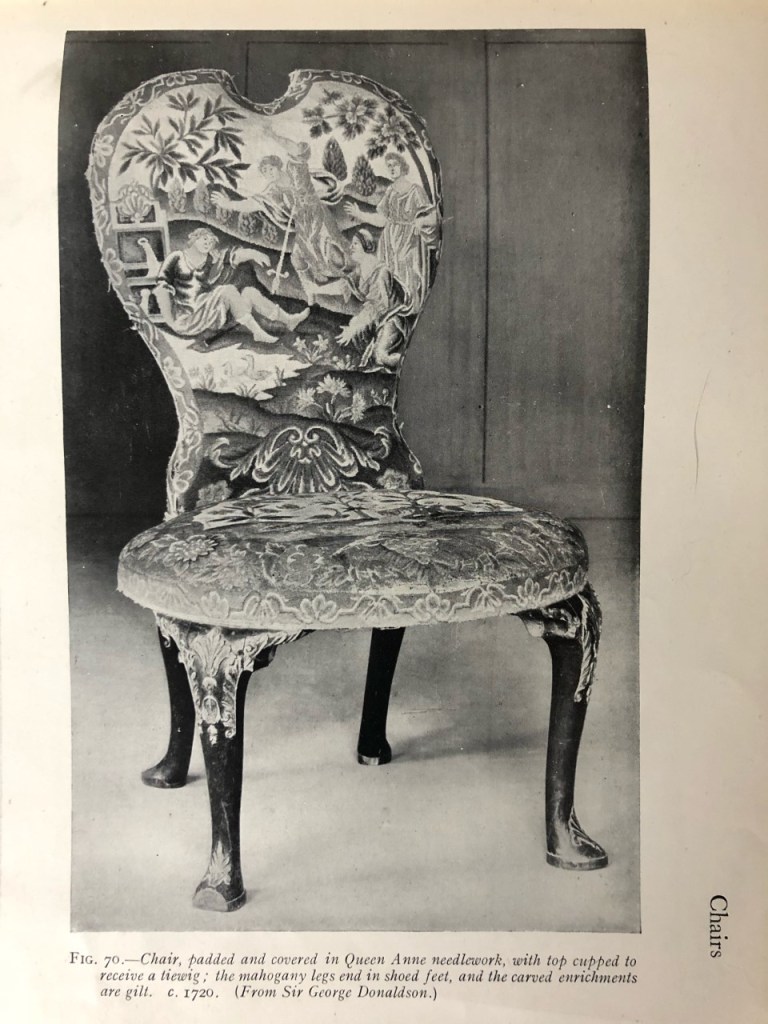
The photograph of the lacquer table, (below), is also from the small cache of photographs from Kent Gallery.

The verso of the photograph also shows the Kent Gallery stamp and with an inscription (in pencil) indicating that the photograph was being used in some publication (perhaps as part of an advertisement in Apollo or The Connoisseur magazines?). The inscription in ink describes the object – ‘Red and Gold lacquer table in the later manner of the Queen Anne period c1710’.

As you can see, Kent Gallery dealt in the highest quality antique English furniture in the period. The Kent Galley photograph albums are a rare survival of material from one of the leading antique dealers of the early 20th century – we are so grateful to Kate and the V&A for their very generous donation of the albums to the Brotherton Library Special Collections – once they have been quarantined, cleaned and conserved the albums will be available for researchers – I for one, can’t wait to have another look at them!
Mark


